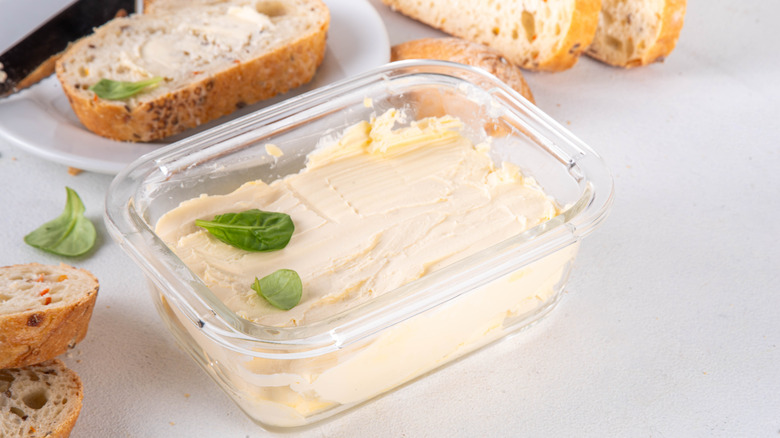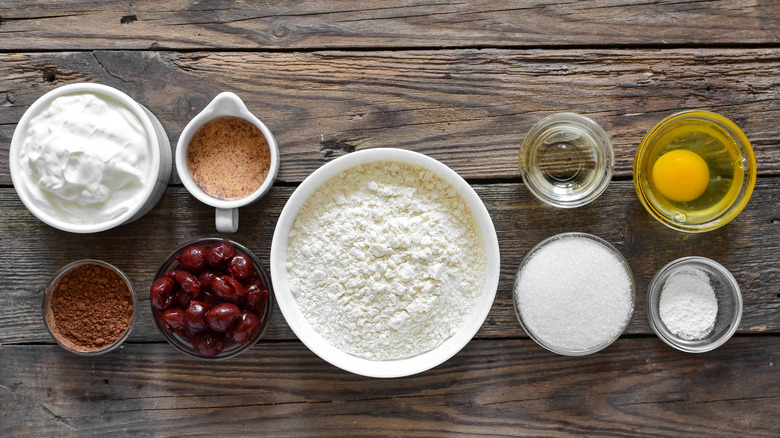Plant-Based Butters Perform Well In Baking, But Won't Taste The Same As Dairy Butter
Plant-based foods are popping up everywhere. You can get a meatless or dairy-free version of just about anything, from chicken substitutes to plant-based milks and everything in between, including butter. To better understand what differentiates plant-based butter from dairy-based butter, Chowhound reached out to an expert for clarity. Kantha Shelke, PhD, CFS (Certified Food Scientist) and a principal at the food science and research firm Corvus Blue LLC, shared some exclusive insight on why plant-based butter won't taste quite the same as the original and what tweaks you'll need to make in order to get delicious baked goods.
When used for things like buttering toast, plant-based butters work great in a 1:1 ratio, according to Shelke, who is also a senior lecturer on food safety regulations at Johns Hopkins University. But what is plant-based butter actually made from? Created from emulsifiers, plant oils, and flavorings, it's designed to recreate the look and feel of regular butter. But Shelke warns that, when using them for baking, things get a bit more complicated. If your butter is the only vegan substitute, then the texture of your baked goods won't likely be affected. But if not, there's no need to worry. Shelke says you can simply make a few minor adjustments. "Do not expect the texture to be identical to the traditional product," she warns. "Expect slight differences." She advises that vegan butter has a lower melting point, so you'll want to be careful to avoid overheating.
Taste is everything
Plant-based butter is a great substitute for a number of reasons, like getting beautiful color on baked goods that incorporate food dye for a brilliant hue (hint: dairy-based butter tends to lend its natural yellow color to the shade of the foods we bake). But as much as we eat with our eyes, we also rely heavily on our taste buds and, according to Shelke, you'll have to put in some extra work to get the flavor you are expecting.
She recommends taking a case-by-case approach to each dish to make sure the desired taste is achieved. "Choice of flavoring matters," she says. "Replicating the richness and authenticity of the original dairy-based product will require identifying the right flavor combination and the use of certain flavors like almond, hazelnut, maple syrup, and vanilla that are often associated with dairy flavors." In other words, you'll have to work with your other ingredients to compensate for the rich buttery flavor that your plant-based ingredient is lacking.
But when it comes to those ingredients, Shelke also warns that choosing appropriate ingredients is important so they don't bring in off-notes of their own, thus changing the intended flavor profile of your final dish. Shelke advises, "Adjust the temperature to prevent off-notes developing from other ingredients." She goes one step further with an expert insider tip that can really help elevate your dish's flavor: adding an extra dash of salt can enhance the sweet and buttery notes of any recipe.

